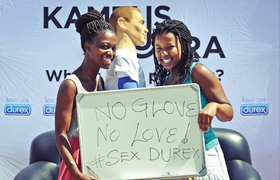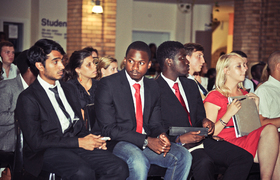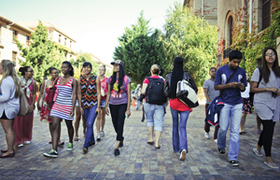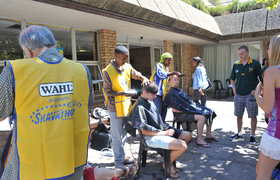Engineering an HIV/AIDS competent society
15 October 2012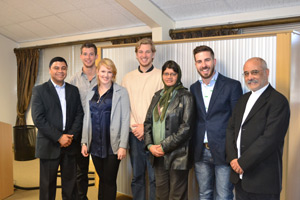
It was a celebration of the work of UCT's engineering staff and students to combat HIV/AIDS-related problems on campus and in broader society.
UCT's Faculty of Engineering and the Built Environment (EBE) teamed up with the university's HIV/AIDS Institutional Co-ordination Unit (HAICU) on 1 October to honour the efforts of students and staff to stem the spread of the virus. Professor Francis Petersen, dean of EBE, said the event highlighted three facets of the faculty's work: research, communication and curriculum-based aspects of anti-virus activism.
"We are committed to taking the message of [combating] HIV/AIDS out," said Petersen.
Sianne Abrahams, project officer at HAICU, agreed with Petersen about the benefits of including HIV awareness in the curriculum. "Students and staff see that the role of HIV can be incorporated as a theme into core curriculum objectives," she said. "Students who actively engaged in the work this year were motivated by the dynamic HIV education which was applied within their existing areas of study."
There was also a special award for a group of students for their design of a sculpture depicting an HIV/AIDS-competent society. The group - comprising Erik de Ridder (civil engineering), Alexander Frehse (architecture), Astrid Gebhardt (fine arts) and Aleksandar Stojakovic (architecture) - won the right to have their sculpture displayed in the new engineering building when it is officially opened next year.
"The sculpture unites different elements in a common language of expression in describing the affliction faced by South African society in the form of HIV and engineering structure, encapsulating the intimate relationship shared by science, engineering and humanity," explained the group in their project write-up. "It resolves that crisis does not discriminate, while stability requires that the HIV molecule dissolve into thin air and the ribbon of justice be returned to its natural position."
 This work is licensed under a Creative Commons Attribution-NoDerivatives 4.0 International License.
This work is licensed under a Creative Commons Attribution-NoDerivatives 4.0 International License.
Please view the republishing articles page for more information.







